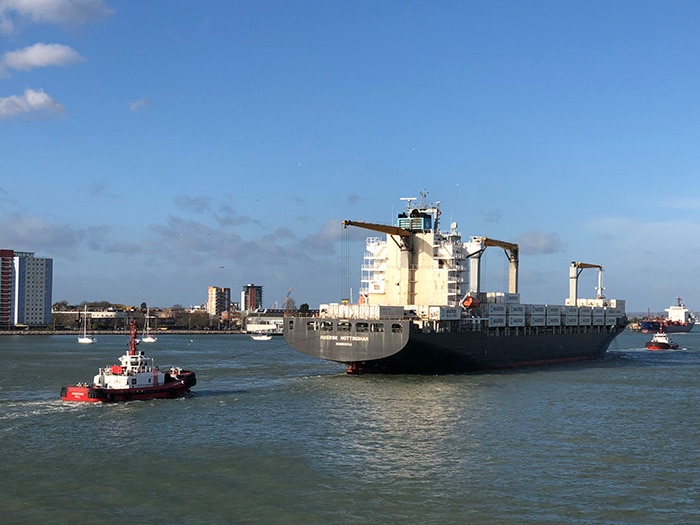
Op-Ed: Breaking data silos to unlock “Just in Time”
Written by Heather Ervin
To enable Just in Time operations, we must break data silos not only between ports and ships, but also within ports themselves. (Credit: David Yeo)
By David Yeo, CEO and Founder, Innovez One
To enable Just in Time operations, we must break data silos not only between ports and ships, but also within ports themselves. This is about more than deploying new digital technologies—it is a fundamental change that will require political leadership, new business models, and a fresh approach to optimizing port calls.
One of the keys to accelerating shipping’s decarbonization transition can be found in ports. Achieving “Just in Time” (JIT) operations will be critical to eliminate one of the biggest emissions-inducing inefficiencies in the maritime sector: the practice of “rush to wait”, where ships sail at speed, increasing their greenhouse gas (GHG) emissions exponentially, only to wait at anchorage outside congested ports. Achieving JIT has the potential to reduce a voyage’s emissions by 14%, according to the IMO.
But achieving “Just in Time” is no simple task. What is currently missing is a constant and reliable information flow not just between different ports and vessels, but also between the various services involved in supporting a vessel’s arrival, stay, and departure within the port itself.
Connecting the dots of port arrivals
Organizational and management structures vary a lot from one port to another, but in many cases, a number of third parties are involved in managing one or more aspects of operations. Key steps such as tug and pilotage services, cargo loading and discharging operations, or the provision of mobile cranes, for example, are often handled by different suppliers, each on their own schedule and with their own systems.
Too often, those services are not digitized, and when they are, the different systems don’t “talk” to each other. This limits the ability to coordinate all the moving parts that are needed to enable ships and goods to transit seamlessly in ports, so that the entire port stay can be optimized rather than each service individually. In short, we too often optimize in silos!
Solving this problem requires greater data integration to coordinate and align all steps in a vessel’s journey, from its estimated and actual time of arrival to the marine services and cargo operations required, and from there assess the duration of the stay to estimate its departure time and plan the associated resources that will be needed. Enhanced digitalization of those systems is the obvious starting point, but integrating those systems to seamlessly coordinate operations is the next frontier for data-powered optimization and will mark a step up to truly streamlined port calls.
Complexity will grow
This change must start today, because achieving true port call optimization is about to become a lot more challenging. We are entering an era where ships will be propelled by a greater variety of fuels and power sources, making their needs more specific.
Responding to this will not only require the right infrastructure to offer a broader variety of fuels at scale, but will also create complex puzzles to ensure that every ship is matched with the right berth to meet its specific needs. This growing complexity makes it all the more urgent for ports to optimize their existing operations, putting the right foundation in place to then integrate the major changes on the horizon, which will be vital if they are to remain competitive in the longer term.
Beyond technology
The digital technology needed to collect and integrate data already exists, but political leadership will be essential to make JIT a reality, as well as addressing the broader challenge of driving ports’ energy transition. Port authorities have a key role to play in bringing all subcontractors and partners on board, but this must also be supported by the right regulations and incentives.
Some ports, such as Singapore and Rotterdam, have already made great strides towards port call optimization. Their experience shows how by focusing on digitalizing information and integrating systems from different suppliers, it is possible to ensure smooth information flows and optimize a vessel’s arrival, port stay and departure across suppliers. These real-life examples also highlight the importance of a holistic and collaborative approach to digitalization.
Solving the financial equation will also be essential to incentivize more ports to deliver “Just in Time” operations.Affordable turnkey solutions will facilitate the uptake of digitalization, particularly for smaller ports which don’t have the personnel or resources to develop complex in-house data integration systems. Mature conversations will also have to take place about potential cost-sharing mechanisms with shipowners and other fuel payers such as charterers, who will be the main beneficiaries from fuel and emissions savings, which may reduce their costs under EU ETS, for example. Coordinating this and allocating costs fairly will be challenging, but again a holistic approach will be essential.
Delivering Just in Time will be complex, just as port operations themselves are complex. But by enabling information to flow throughout a cargo’s journey, we can deliver a seamless and greener “first and last mile,” which will be an essential building block on the road to net zero.




